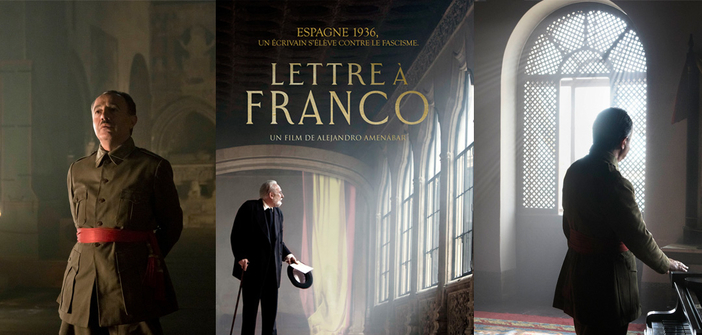With “Letter to Franco,” Alejandro Amenábar tackles numerous myths of the Spanish Civil War to better denounce contemporary Spain.
The first scene of the film is a summary of the intention behind “Letter to Franco.” While the film will indeed address the Spanish Civil War, it does so from a different angle. Say goodbye to armed confrontations and hello to bureaucracy. There are no conquerors or martyrs, only individuals caught in the machinery of history, each advancing their ideas, convinced they are on the right path to restore the country.
Alejandro Amenábar, once a young prodigy of Iberian cinema in his early days, has become increasingly discreet behind the camera. Thus, the director of “The Others” (2001) takes his time to develop each of his works. He is making a film with historical value for the first time. Always with the intent to provoke thought, the filmmaker challenges the viewer’s opinions and allows no rest. The viewer must think when watching a film by Amenábar and should not expect conformity.
The director is particularly interested here in Miguel de Unamuno. The greatest Spanish writer of the time is now notably known for a speech in which he opposes the military that had seized power in Spain.
In this speech, the director of the University of Salamanca utters the famous phrase: “you will win, but you will not convince.” A phrase for which he was expelled from the “Race Congress” with nothing more than a suspension, paradoxically in a dictatorship that, at the time, had murdered the poet Federico García Lorca for far less inflammatory remarks.
However, Miguel de Unamuno is also a controversial figure. At the outset of the uprising, the writer publicly and financially supported Franco’s troops, which were not yet under Franco’s banner, before changing his opinion upon realizing the atrocities committed by members of the Phalanx. Collaborator or hero? The debate rages in a country that has not entirely moved on.
A Relationship between Historical and Contemporary Spain
With “Letter to Franco,” Alejandro Amenábar addresses the history of Spain.
Particularly an obscure part of it: the beginning of the nationalist uprising.
Partly through the lens of the relationship with one of the greatest intellectuals of his time. The director deals with the rapprochement of elites and armies when a democracy is dying.
Catholics and anti-clericals are at odds in Spain at that time. The Republic with its tricolor flag (red, yellow, violet) fails to develop the country. Thus, when the uprising occurs, Miguel de Unamuno sees in these
protagonists a means to restore order. Until obscurantism prevails and, symbolically, imposes a new flag: the bicolor. A flag of national unity still in use today…
Another sensitive point is developed by the director. As he stated to Télérama, he wanted to “show the Franco nobody saw coming.” This military man with an impeccable but charisma-free path. A consensual choice of a military junta searching for a puppet to place in power to satisfy its Nazi creditors. The man, even though sure of his convictions, is measured in his ambitions. His expressions, both oral and physical, are nothing of a bloodthirsty dictator. The story is of a man shaped by history and events. He became what society made of him. Propaganda then took charge of establishing the mythology around his figure.
Spain still bears the open wounds of the Francoist period even today, as evidenced by the socio-political situation across the Pyrenees. Alejandro Amenábar highlights the conditions that led to the dictatorship to underscore modern troubles. A historical reminder to gain perspective on contemporary society. To avoid proudly heading toward another dark period.
Paul Guianvarc’h


